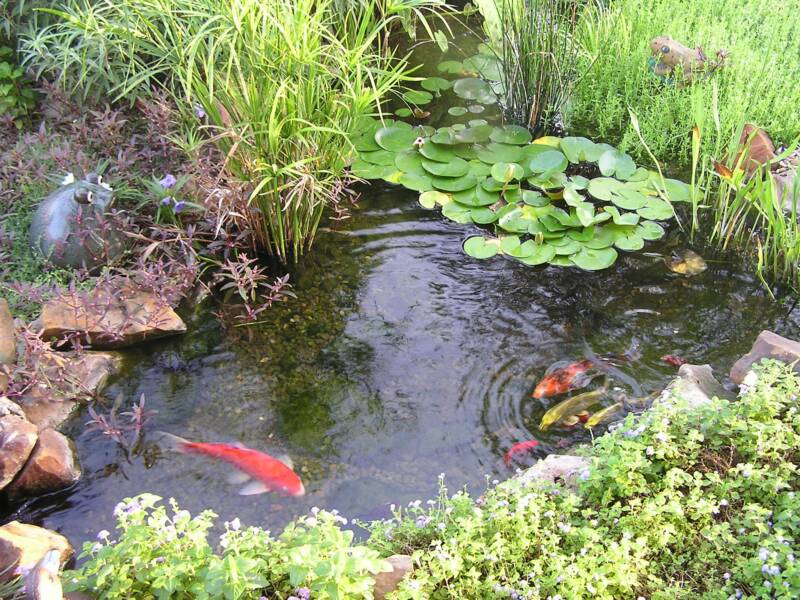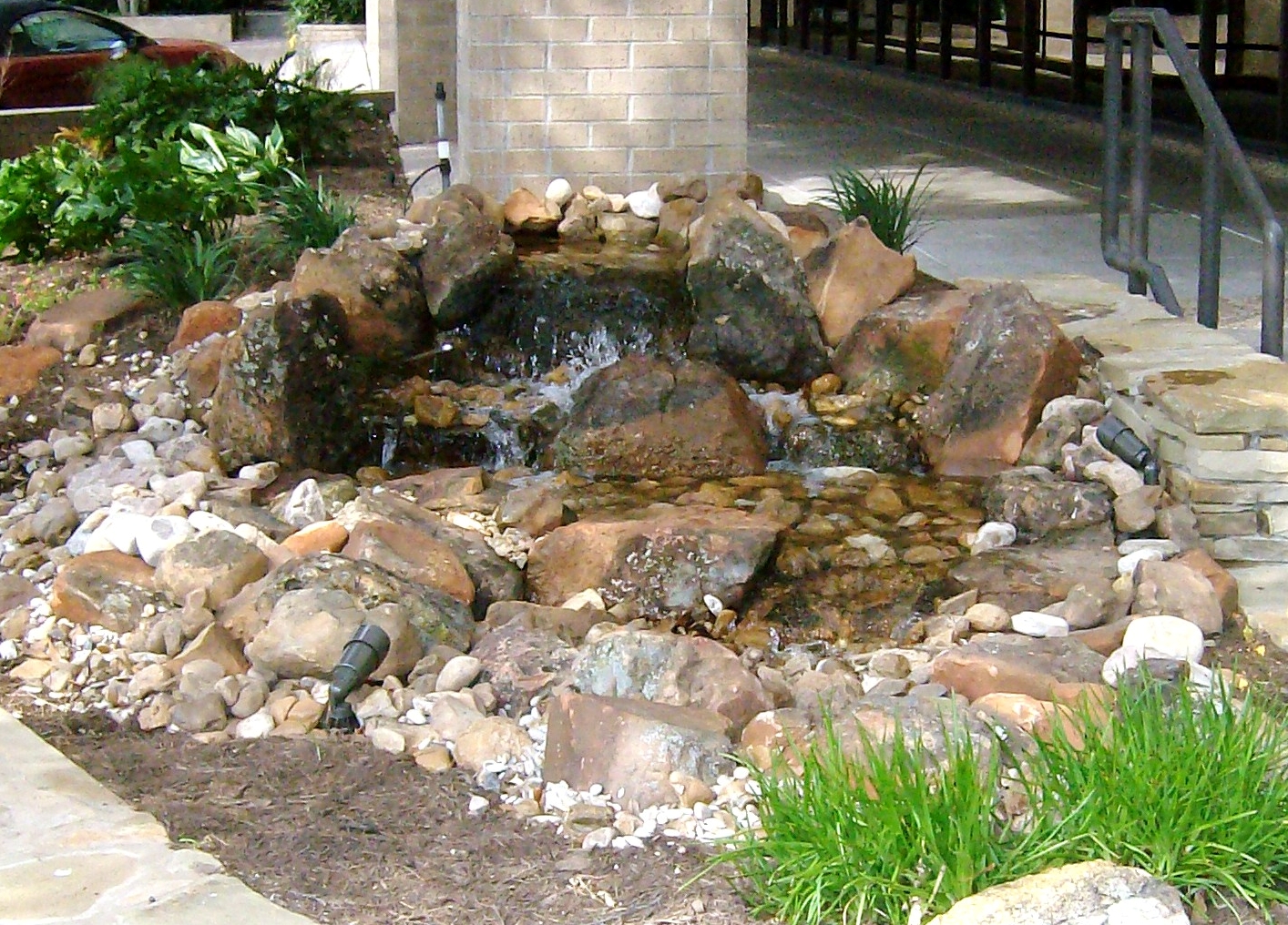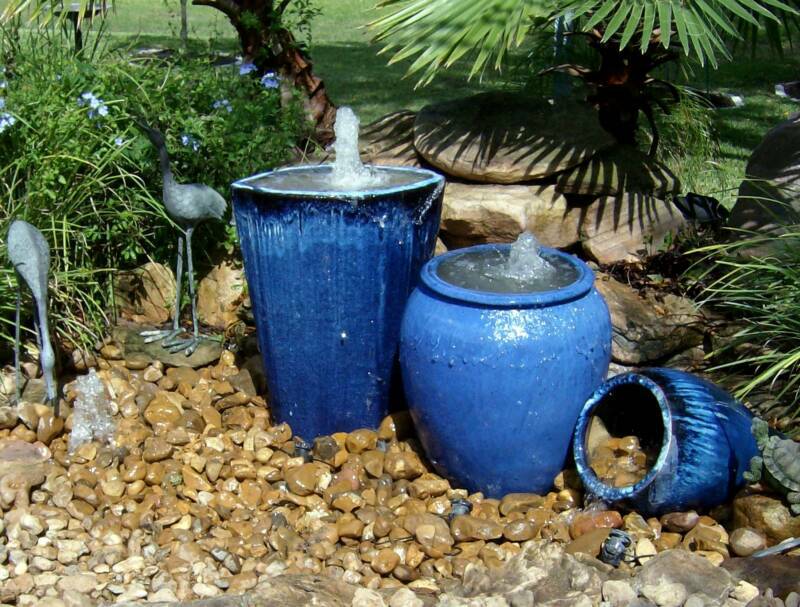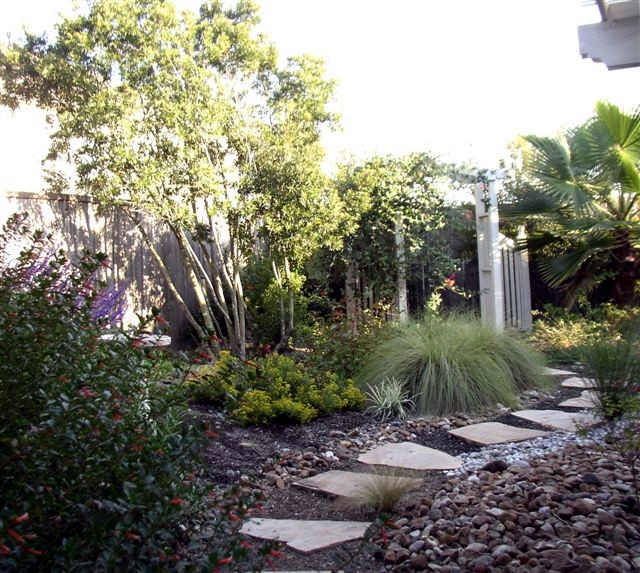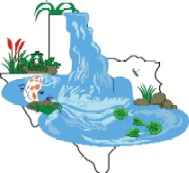


Rainwater Harvesting
Organic Ecosystem Ponds
Pondless Waterfalls
Urn and Fountain Features
Water-Wise Landscapes
Meet Your Water Feature Professionals


Texas Ponds and
Water Features
Winter Pondering
by Matt Boring
‘The Natural Water Gardener’
If you have an ecosystem pond or are thinking of installing one soon, you may be in the dark as to what happens to the pond in the winter. Do we have to shut the pond down?...... remove the pump?......drain out the water?!?!! What about the plants? What happens to the fish? Can they survive in the cold that sends us scurrying for the indoors and a warm cup of cocoa?
The good news is that an aquatic ecosystem will continue to operate naturally through the winter. Unless you live somewhere very cold where ice dams can form in the waterfall/stream area of your water feature and send water outside the liner, you can leave the pump on the entire year. Remember, if your pond has a skimmer, the water level can only drop a few inches before starving the pump, so the pond will never completely drain down to the point where your fish are in trouble. If you live in a cold area, just keep an eye out for rapidly-dropping water levels. Waterfalls and streams surrounded by snow and ice look quite striking, so unless you have a problem with ice, I’d recommend leaving them on through the winter. If you’re in an area where it’s really cold, your pond may freeze over during the winter. You just need to make sure there’s a hole open in the ice for gasses to exchange and all your fish should survive with no problem. Keeping your waterfall running can perform this function and keep the area looking beautiful at the same time. The fish more or less ‘hibernate’ in the lower part of the pond. They are endothermic, or cold-blooded, so their bodily functions slow way down when it’s cold outside. You shouldn’t feed your pond fish when the water temperature drops below about 50 degrees anyway. They may eat the food, but can have trouble digesting it and feeding them during this time can lead to intestinal blockage and even the death of the fish. Koi and other pond fish can easily survive the winter in a two-foot deep, in-ground pond in most of the United States and Canada. Even if several inches of ice form on the top of the pond, the heat from the surrounding ground keeps the water from freezing all the way down.
Your plants may go dormant, but in most climates in North America, the majority of them will return next spring to once again beautify your pond area. The further north you live, the more you may have to replace plants the following spring. Down here in southeast Texas, we don’t have that kind of problem. In fact, in a mild winter, many of our aquatic plants will stay green all year. During our spring cleaning of the ponds we usually have to divide aquatic plants that have gotten too big rather than replace plants that have died from the cold. Still, enough pants go dormant to effect the balanced state of the pond ecosystem. Even if a plant stays green, it may not be in a growing or blooming phase of its growth–the time when it’s taking in the most nutrients from your pond’s water, and so may be doing little to help balance your system.
During this time of the year as the aquatic plants slow down their intake of free-floating nutrients, the bacteria in the biological filters also slow down. This means that the system that was removing the excess nutrients from the pond water and keeping the string algae in check is not operating at the level that it once was. During this period of the year, string algae may make its triumphant return to your pond water. Even though the pond will soon re-balance itself to the cooler conditions, you may experience a bit of an algae bloom during this transitional part of the year.
You can go to your local water garden retailer to look for ‘cures’ to this problem. They’re likely to have shelves full of products to reduce, eliminate, or kill algae. Some may say that they’re eco-friendly, while others may scream at you to “Call a doctor immediately if ingested.” How can you fight the battle without doing harm to your aquatic plants and fish? Is there a better way— a natural way, even?
The good news is that organic barley straw has been shown time after time to be effective in controlling algae, especially string algae. It’s not a revolutionary idea, having been used in Europe for centuries to control algae in lakes and large ponds. In the last decade, it’s made its way to the lake management arena, where they were looking for an eco-friendly way to reduce algae. Recently, the success of barley to reduce algae has made it a staple of the water gardening industry, especially to those of us who practice and promote organic water gardening. The beauty of the barley straw is that it is completely friendly to the environment and to the ecosystem in which it is used. Studies have shown no negative effects on higher plants. There is also no evidence that barley straw poses any harm to the fish or invertebrates in the ecosystem. In fact, fish farms and hatcheries that have tried barley for algae reduction report a possible connection between the use of barley and improved gill function and fish health.
Inquiring minds may wonder how it works. Very simply, when the straw is placed in the water, it soon begins to decompose. One of the byproducts released into the pond during decomposition is a chemical that effectively breaks down the cell walls of the algae. Some of the humic substances released from the barley, when combined with oxygen and exposed to sunlight, form a certain peroxide. Studies have shown that it’s this peroxide that breaks down the algae’s cell walls. Studies have also shown that a constant low level of this peroxide will reduce the capability of the algae to form new growth. So there’s actually no harm in leaving barley in your pond all year round.
Even though it sounds like a miracle cure, barley straw isn’t a quick-fix. It takes four to six weeks for the barley to begin breaking down enough to produce the chemicals needed for algae reduction. However, after that, the barley can remain effective for up to 8 months, depending on the size of the barley bale you use. For my customers, I recommend placing an 8-ounce barley bale in the Biofalls and adding a new one about four times a year. That way the old one is still working when we put the new one in since the new one will take a few weeks to get going. Placing it in the Biofalls also means that the barley is exposed to the highly oxygenated water it needs to be effective. It’s also easy to conceal in the Biofalls. You can just let the plants grow to cover it. I’ve even seen the barley sprout right out of the bag and grow in the top of the Biofalls, adding to the natural look of the area.
So don’t worry about the pond in the winter time. It will go on functioning in it’s own individual way until the following spring. If you need help with algae during the transitional time, there is an all-natural cure in barley straw. After a bit the ice and snow will melt, the fish will again become active, and the plants will emerge from their winter slumber to once again fill your garden with their wonderful shapes, textures, and fragrances. Until that time...............
Happy Pondering!

